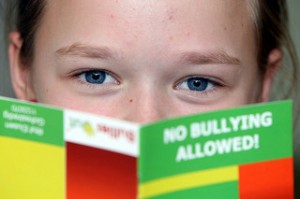 From me, over at This Week in Education, on the effectiveness (or lack thereof) of anti-bullying interventions:
From me, over at This Week in Education, on the effectiveness (or lack thereof) of anti-bullying interventions:
The cynical take on this – that the anti-bullying programs are somehow causing the higher rates of bullying – is not obviously wrong. For example, there is evidence that bullies are at least as socially and emotionally competent as their peers, and it may be that those competencies allow them to leverage the information from anti-bullying programs to accomplish “more effective” bullying.
We should be careful, however, in interpreting the finding that anti-bullying programs are correlated with bullying behavior. As is noted in the study itself – though not in the press release – the study design does not allow for causal inferences.
In other words, anti-bullying programs may not be causing the increased rates of bullying at all. It may just be that schools with higher rates of bullying are more likely to implement anti-bullying programs.
At the same time, the fact that we often do not really know much about the efficacy of our anti-bullying efforts is troubling enough, especially given that the costs of bullying are becoming increasingly clear.
I’m agnostic on the merits of anti-bullying measures. The research on most programs is weak and often sponsored by advocates, and there are very plausible stories to tell about why they might backfire.
My experience with a Restorative Justice program at one of my previous schools really informs my outlook, here. On the one hand, I saw some highly-skilled teachers implement RJ in a way that seemed to be genuinely effective. On the other hand, those teachers seemed to be in the minority.
One of our biggest implementation challenges was that while children rarely enter social situations on equal footing with their peers, RJ depends on using social settings – like discussion circles – to give all students equitable opportunities to have their voices heard.
In theory, it was the teacher’s job to make these RJ-related social settings equitable. In practice that’s extremely difficult to do because you have to get the socially-dominant kids to dial it back while simultaneously encouraging the quieter, less-secure kids to share and participate more. And, of course, you have to somehow establish that the social hierarchy won’t reassert itself once the Restorative Justice session is over.
If you can’t do all of that, you’re playing with fire because you’ve created additional social settings for the socially-dominant kids to dominate. Structured school time that has traditionally offered some students a relief from difficult-to-navigate social situations has been replaced with substantially less-structured time that will be leveraged most effectively by the students who are most proficient socially.
This strikes me as very similar to the dangers of a lot of anti-bullying measures: they try to use social, “student-centered” settings to solve problems that manifest primarily in social, “student-centered” environments. Adults can always try to manipulate those settings to make them more productive, but they’ll always have to fight against the reality that some students are more skillful than others at navigating and exploiting them.
None of which is to say that we “know” that anti-bullying programs (or Restorative Justice) don’t work. But we don’t really know that they do work, either. So we should probably be considerably more cautious about implementing them.
The post The Trouble With Bullying Prevention & Restorative Justice appeared first on Paul Bruno.

















